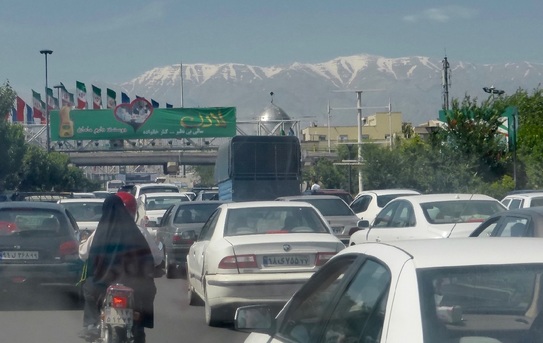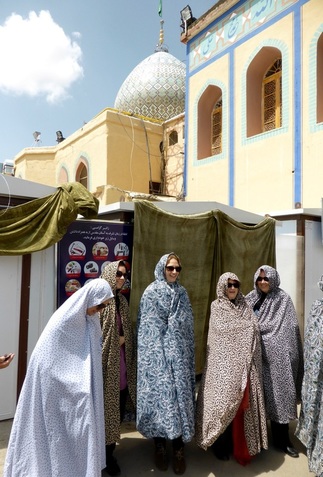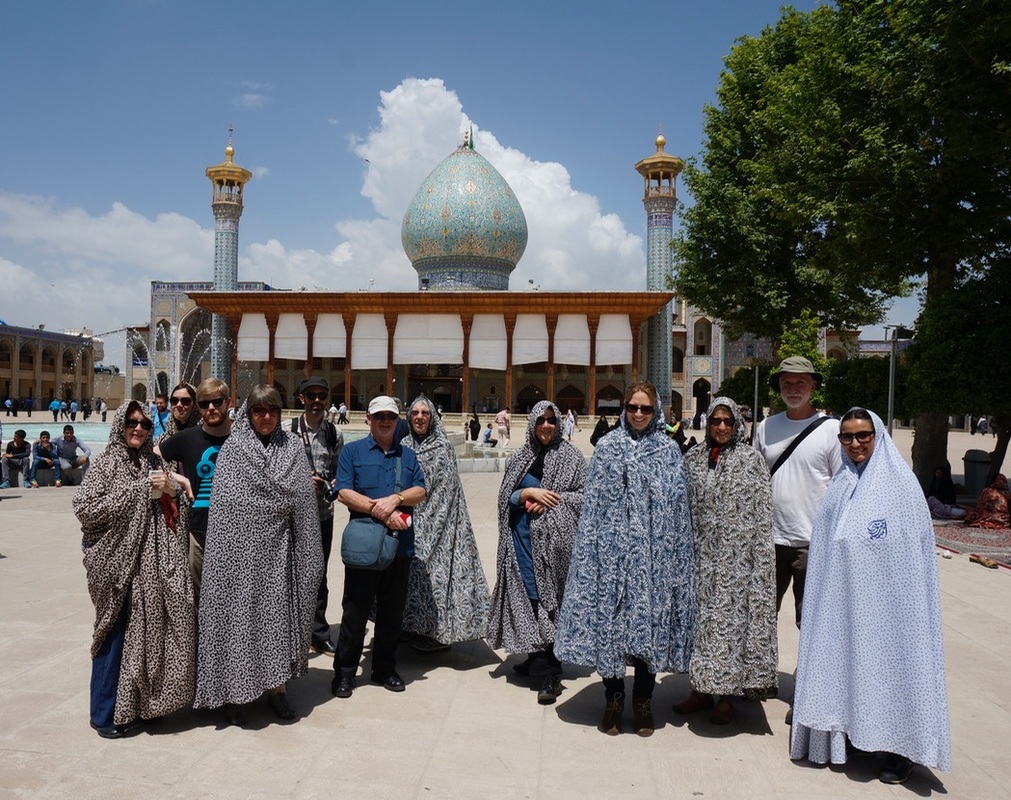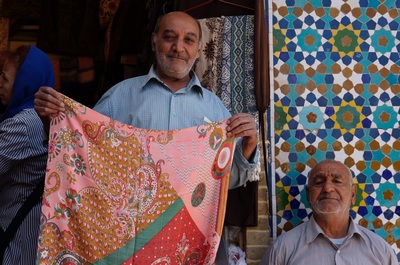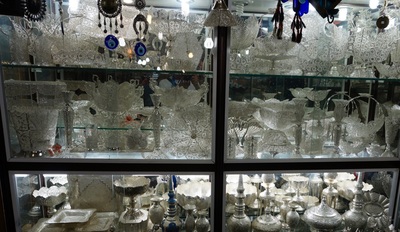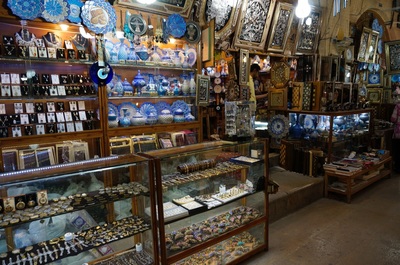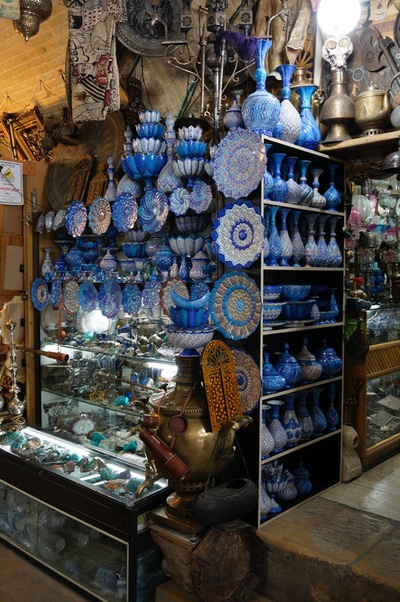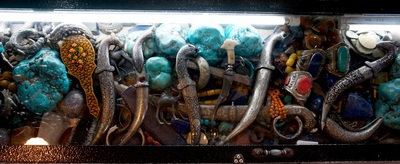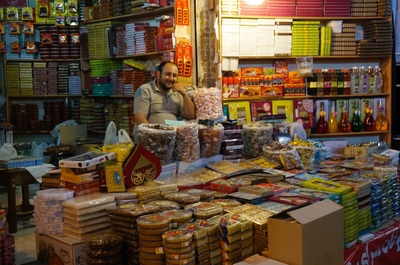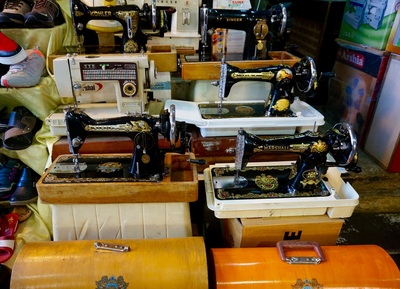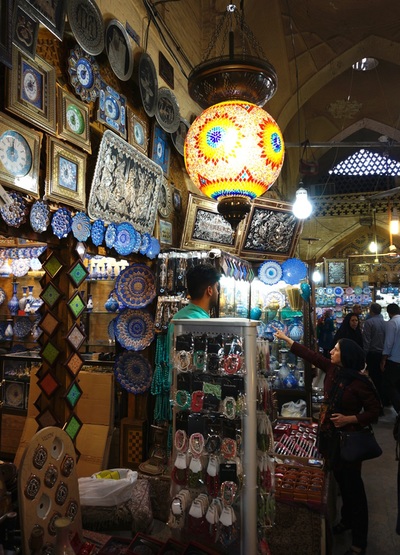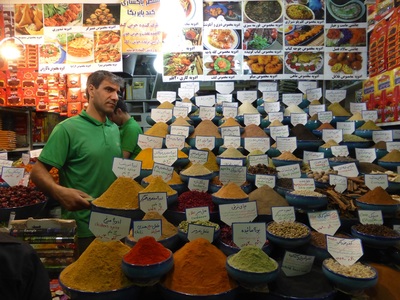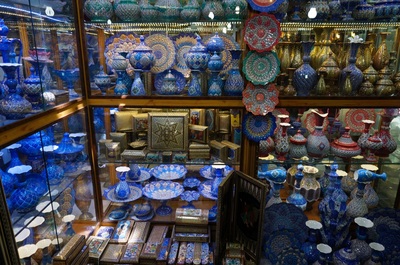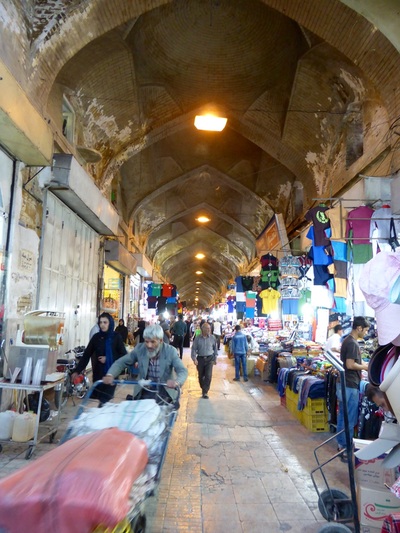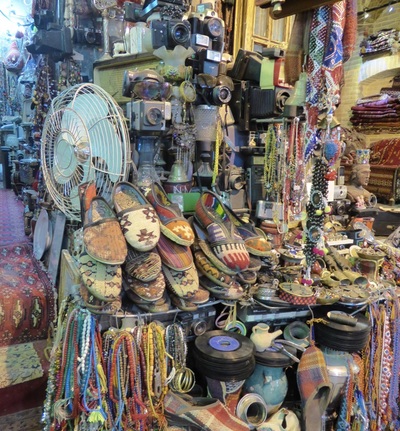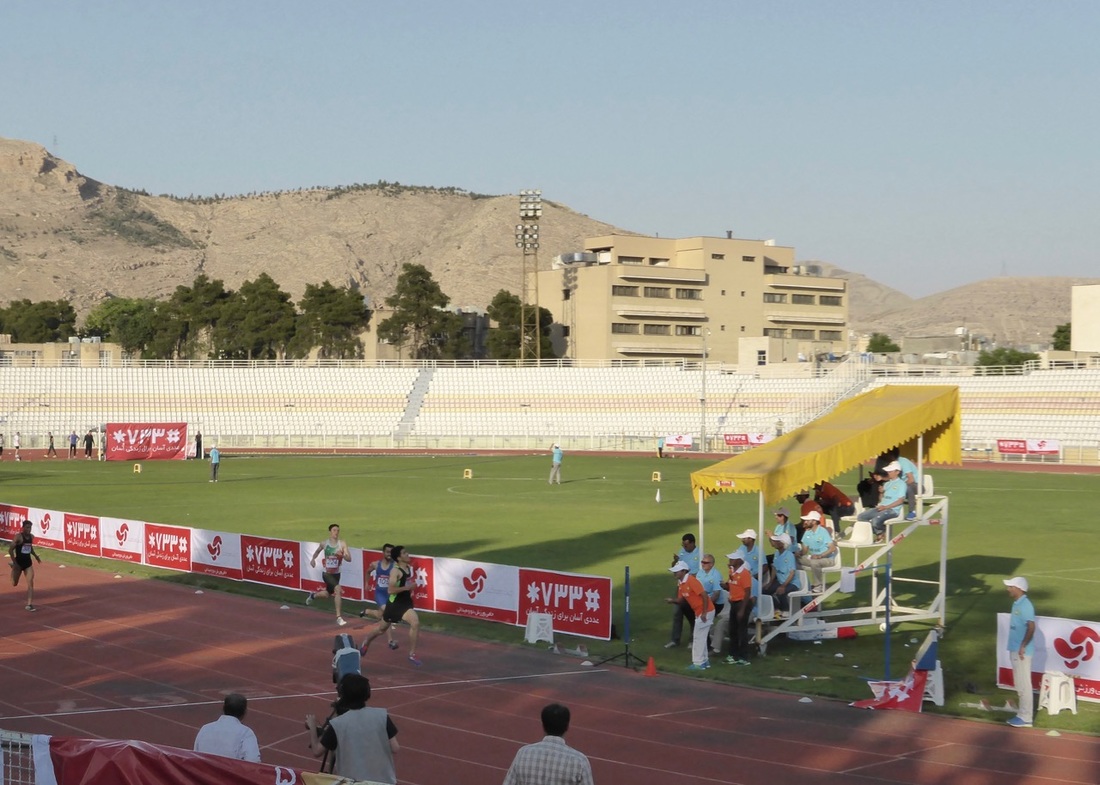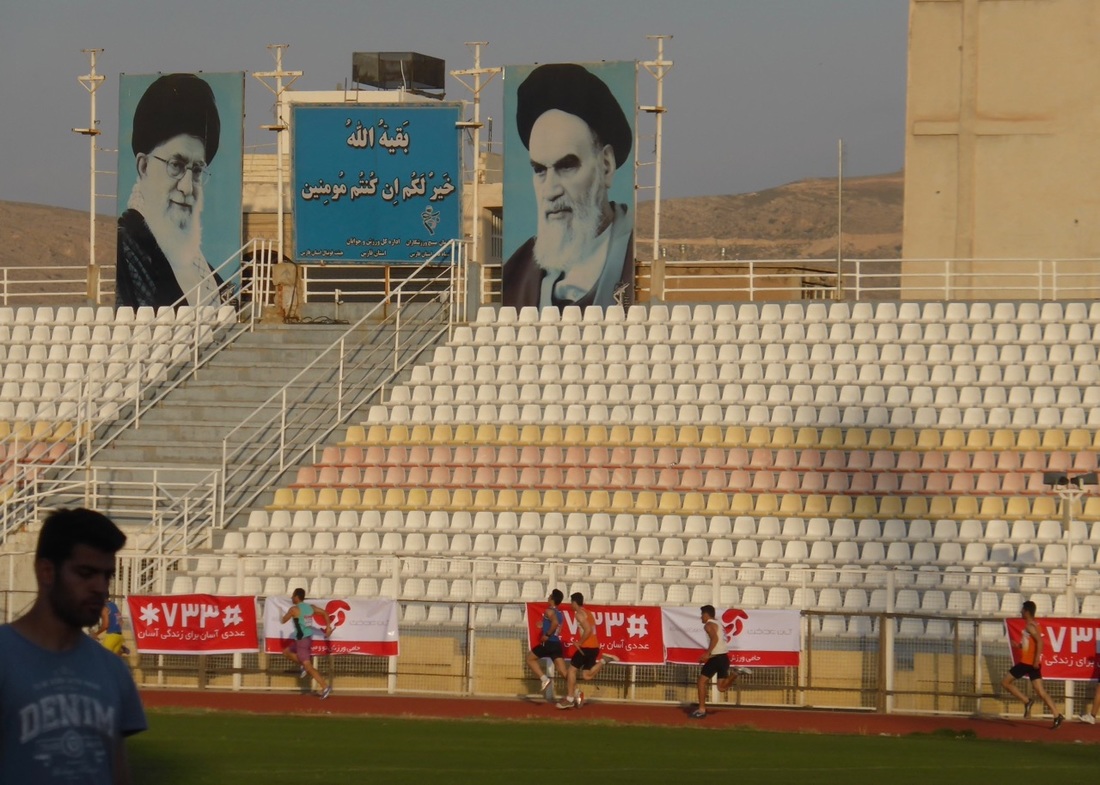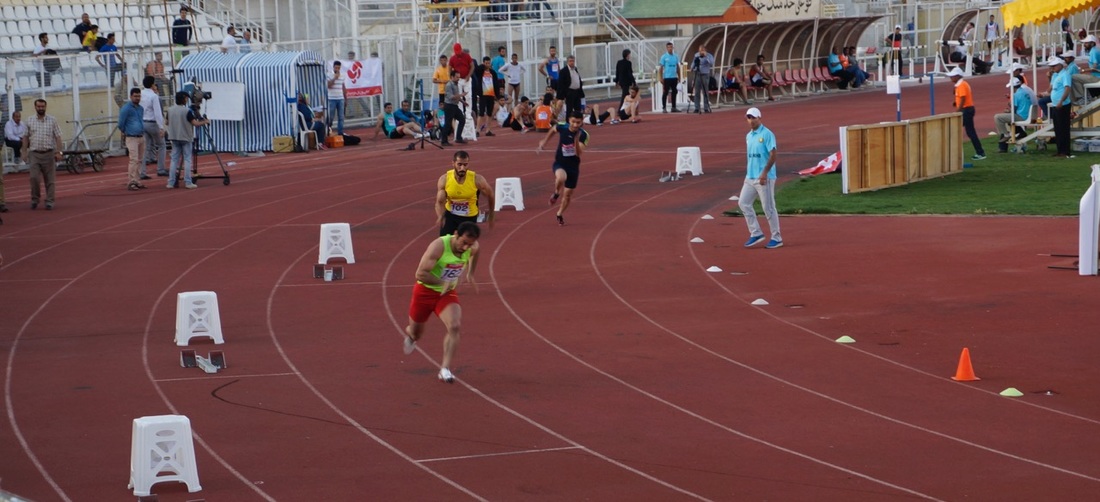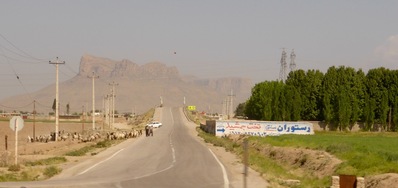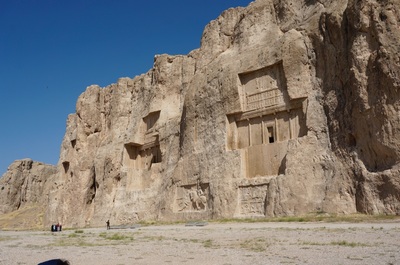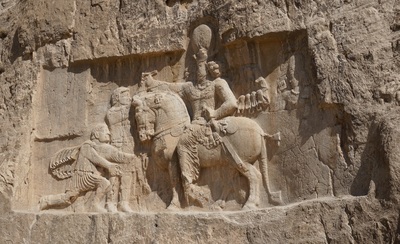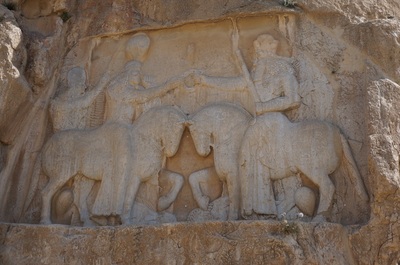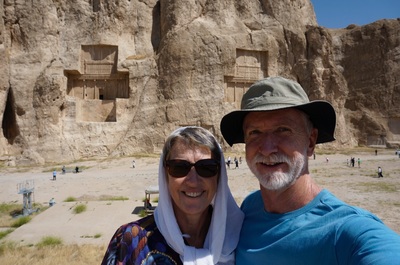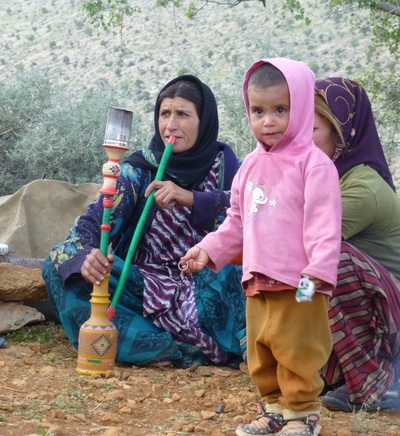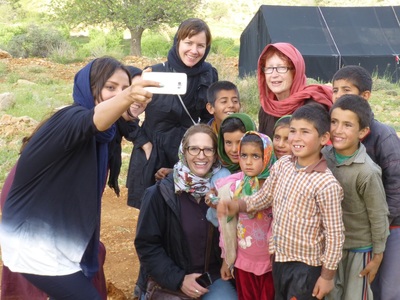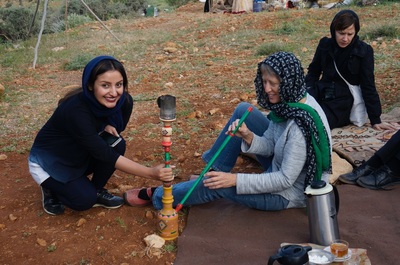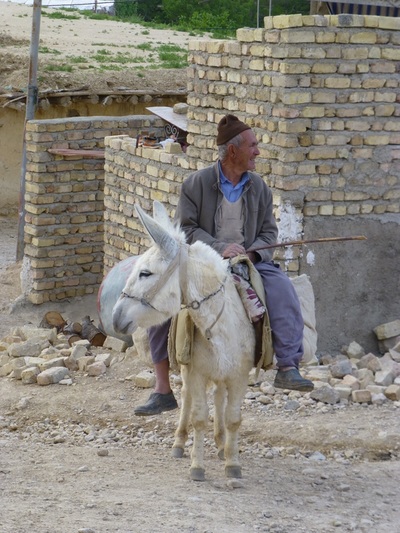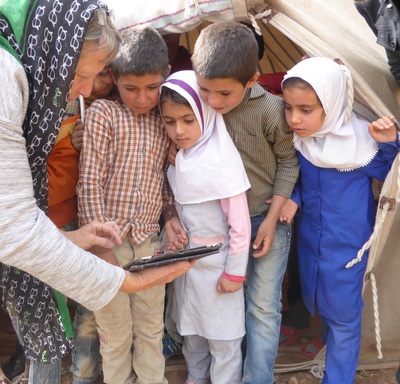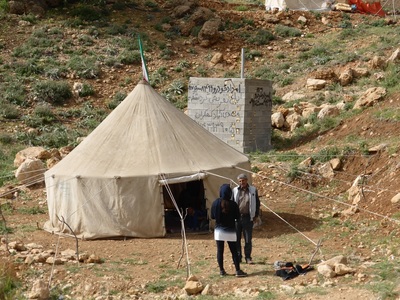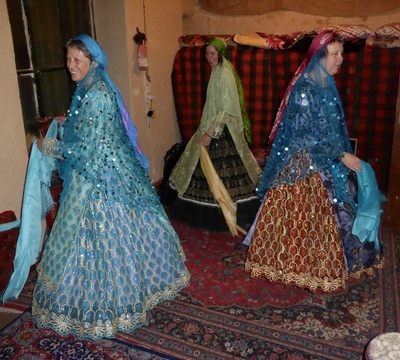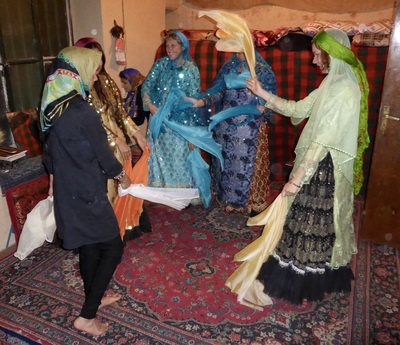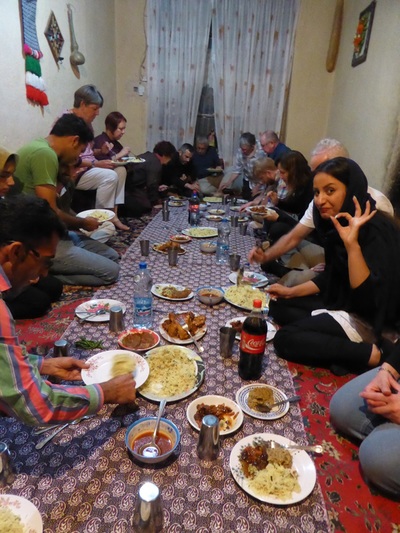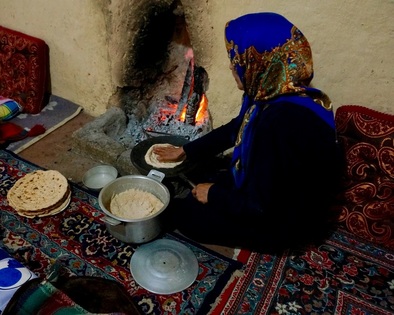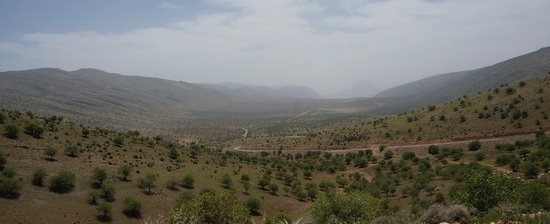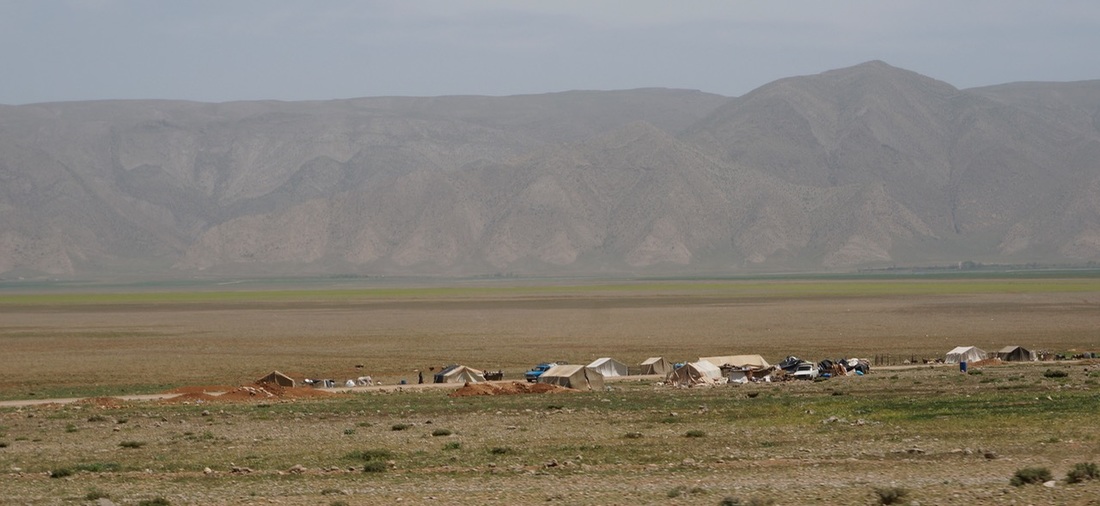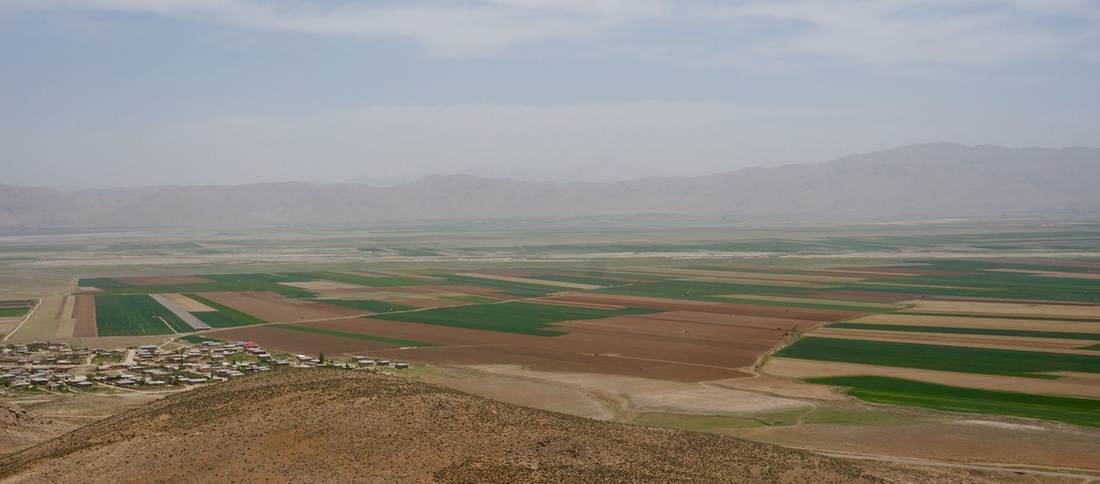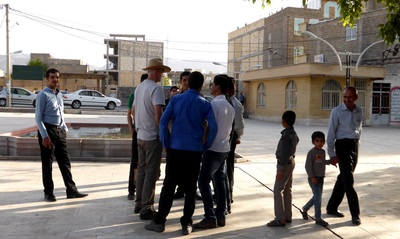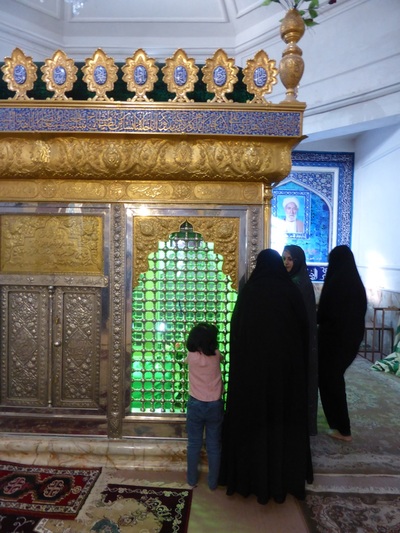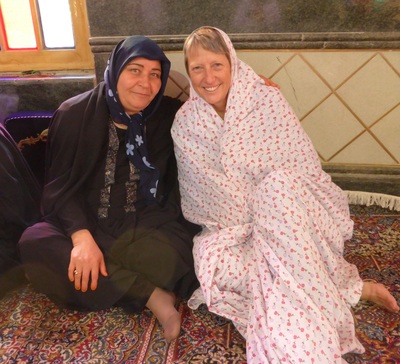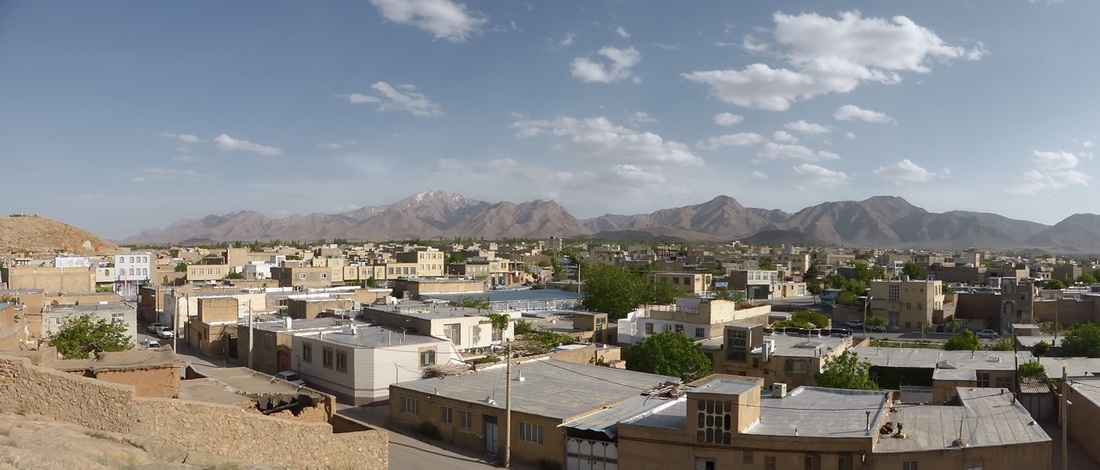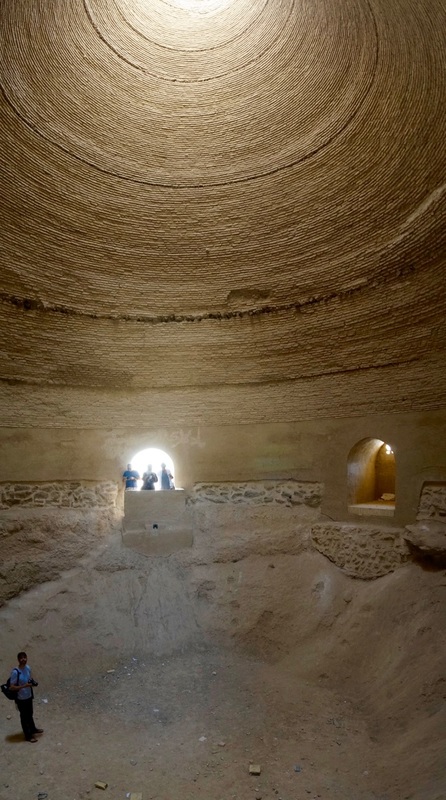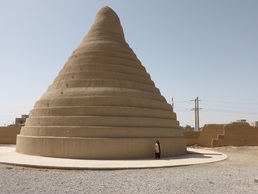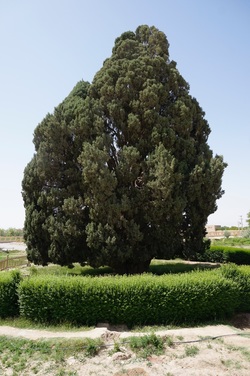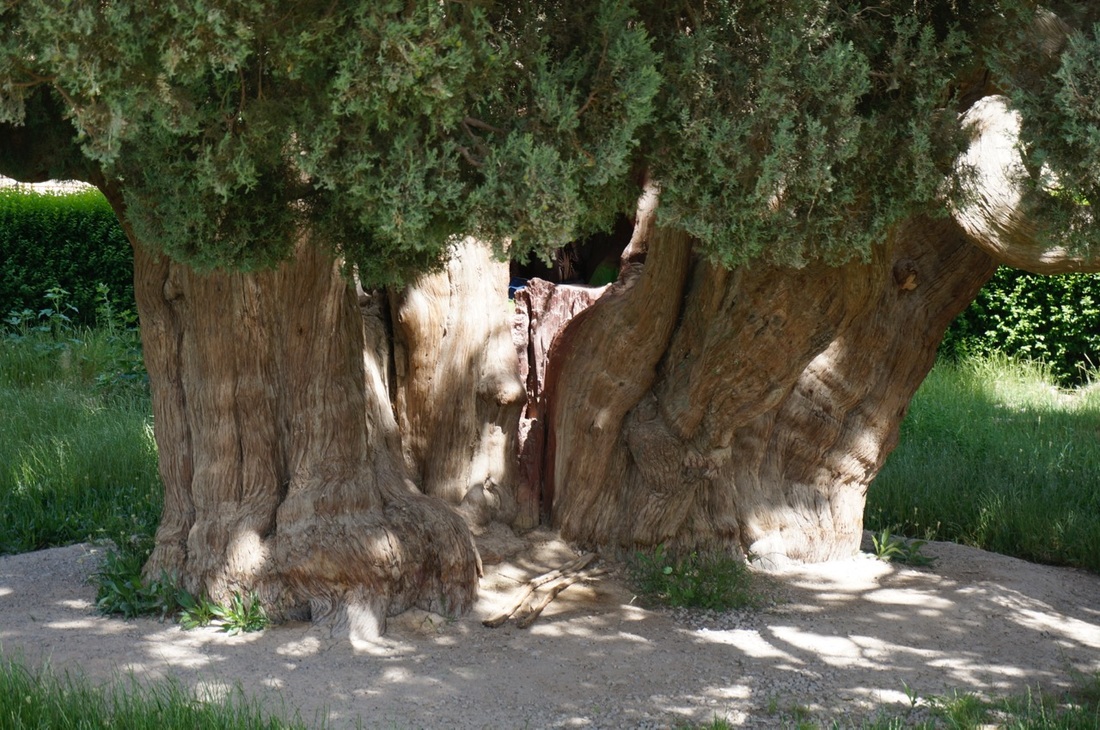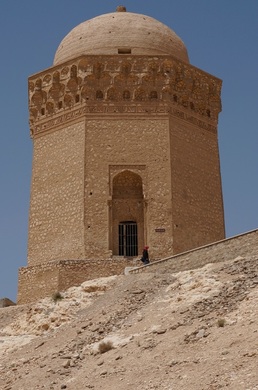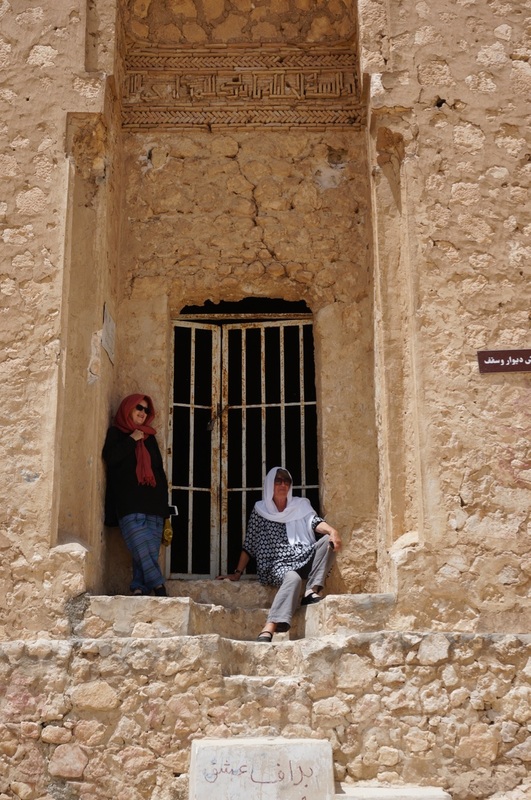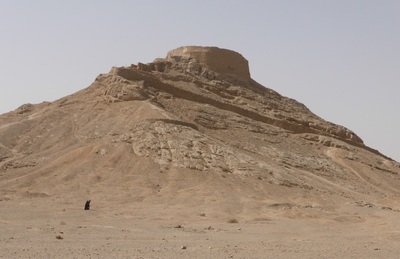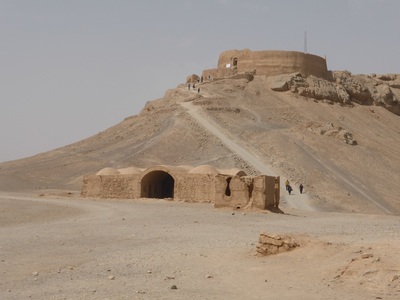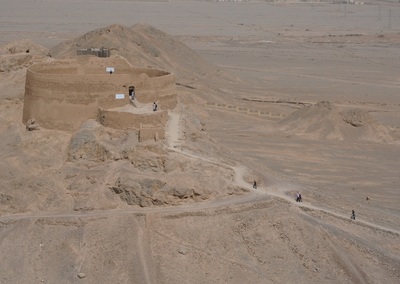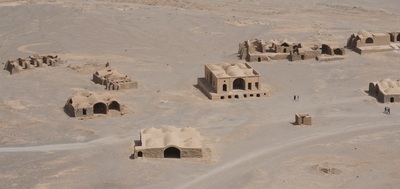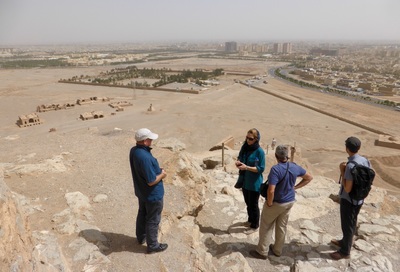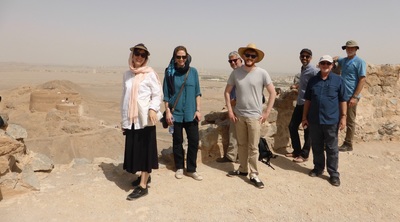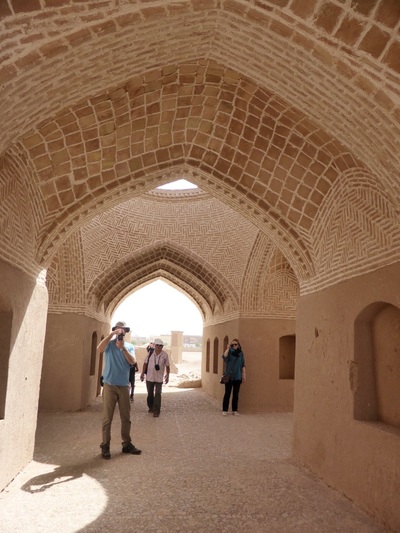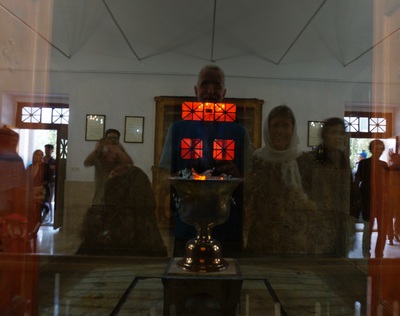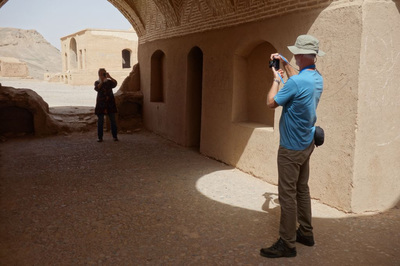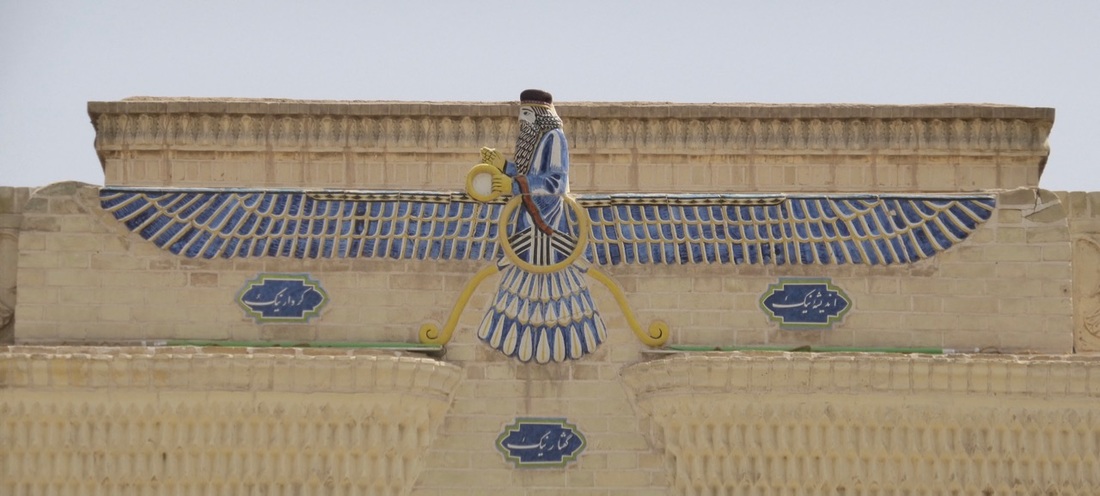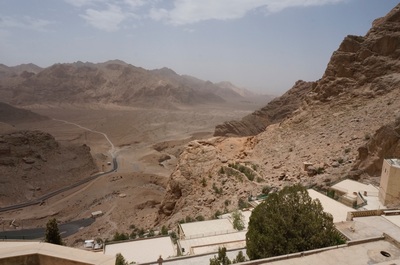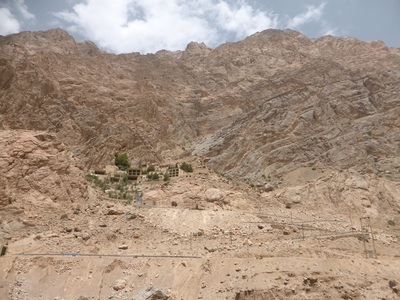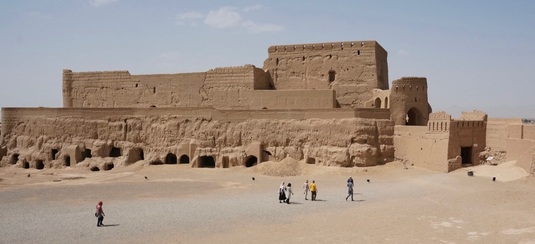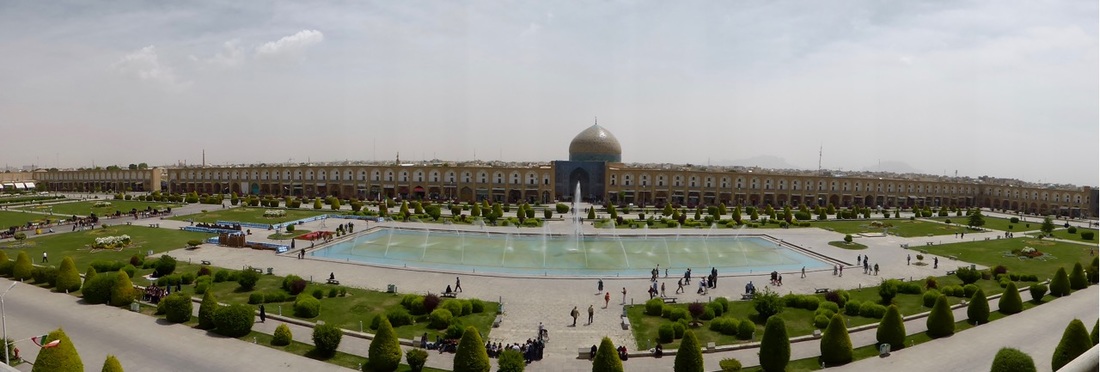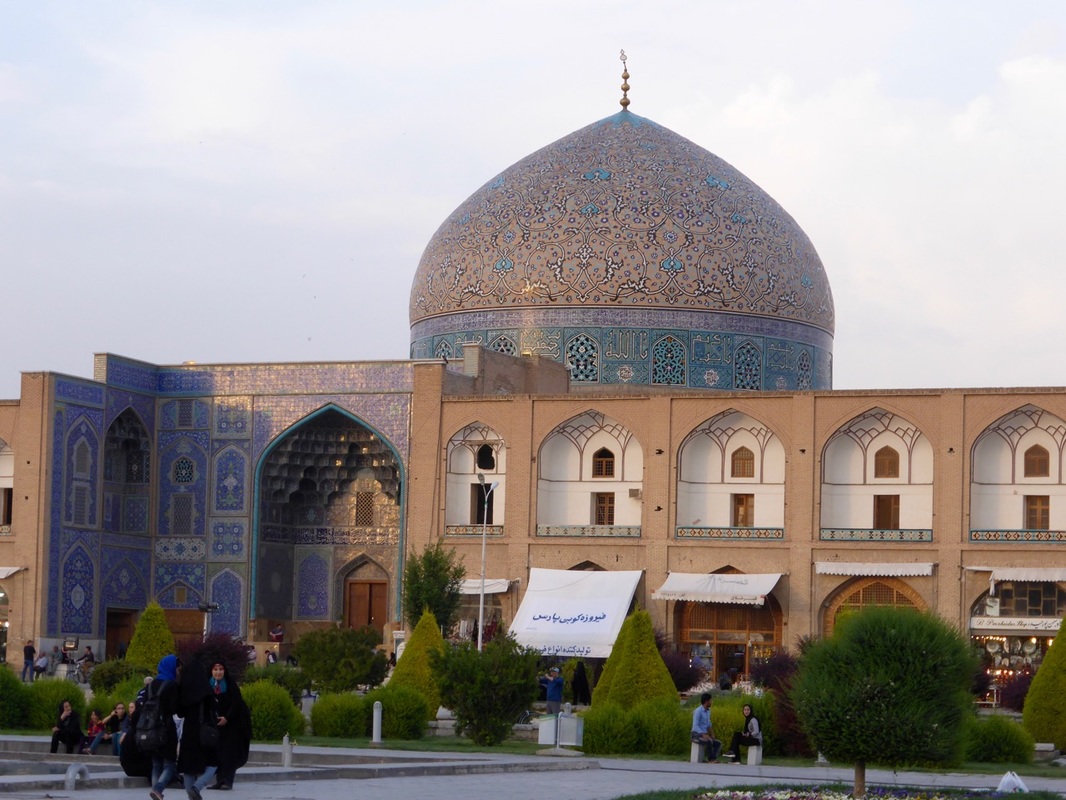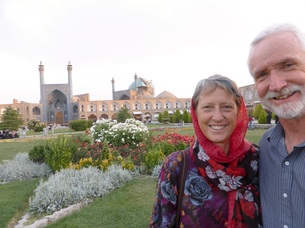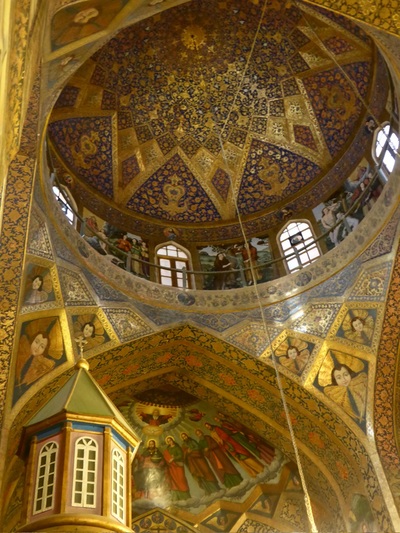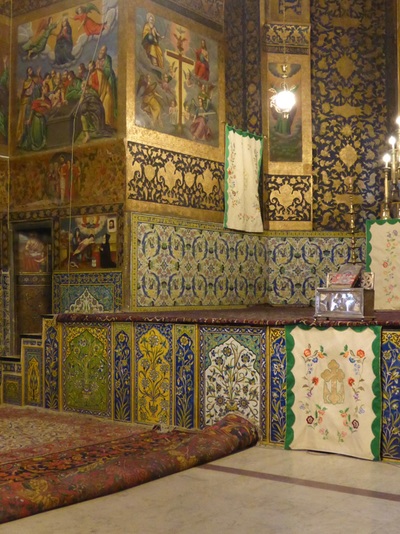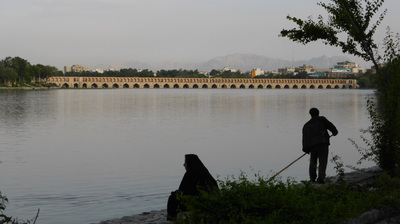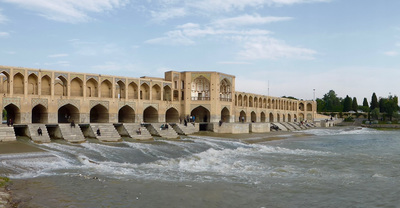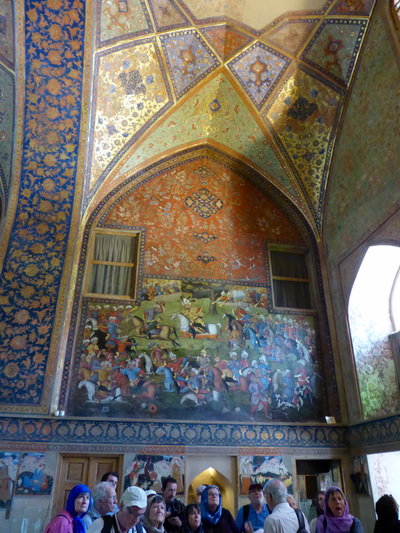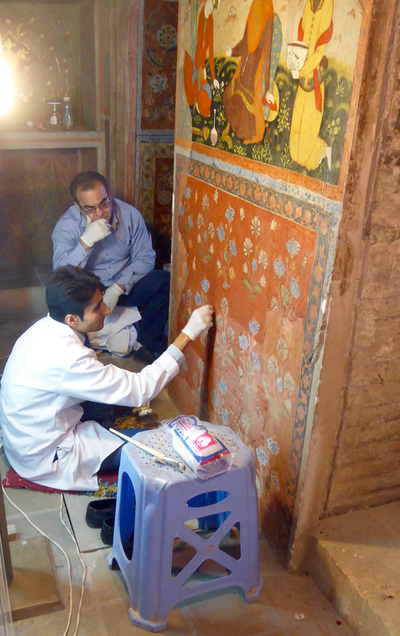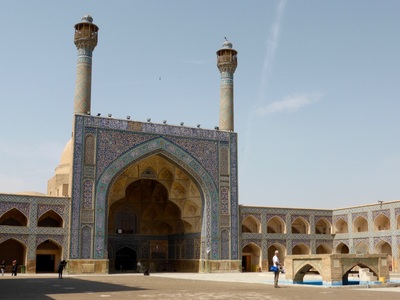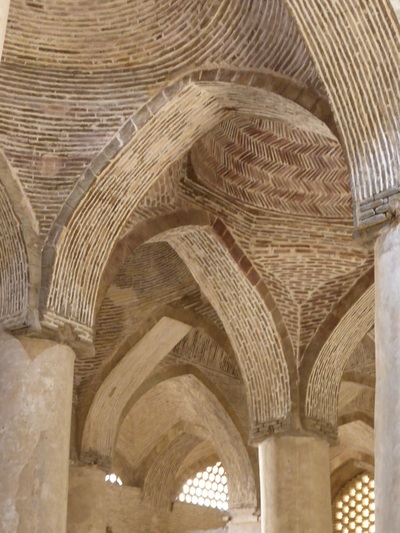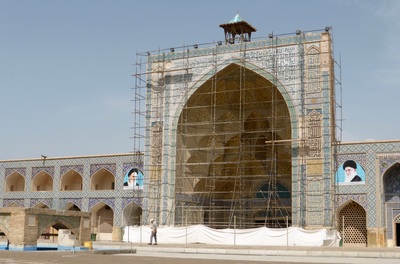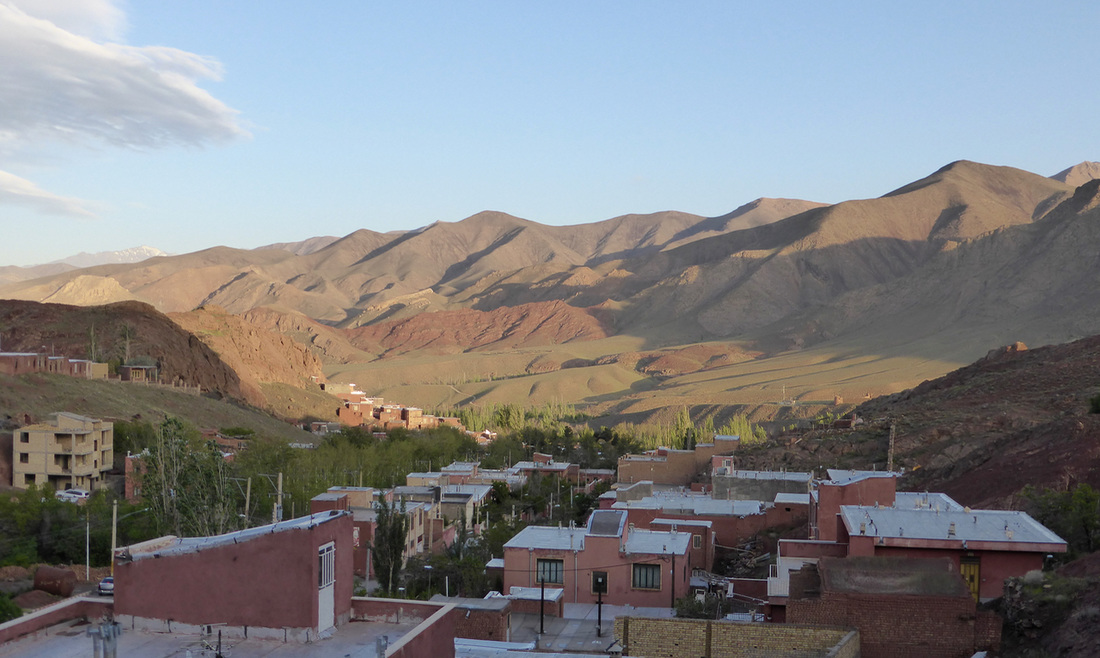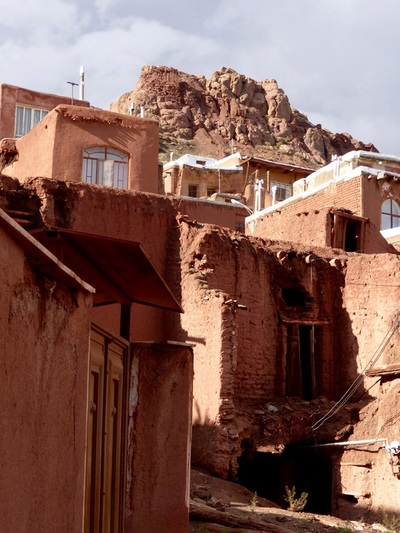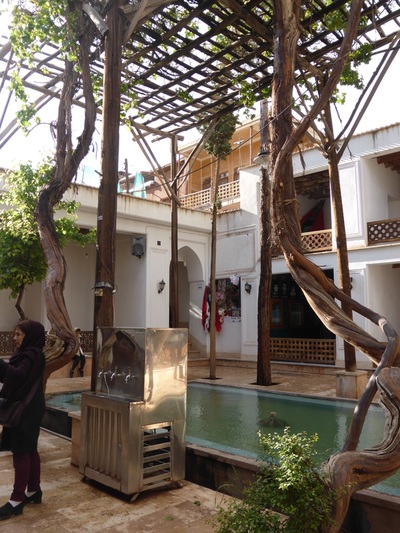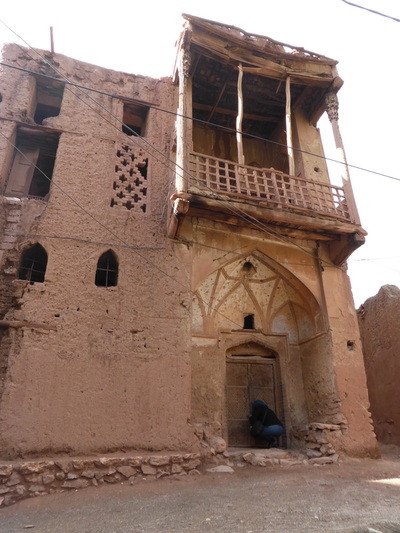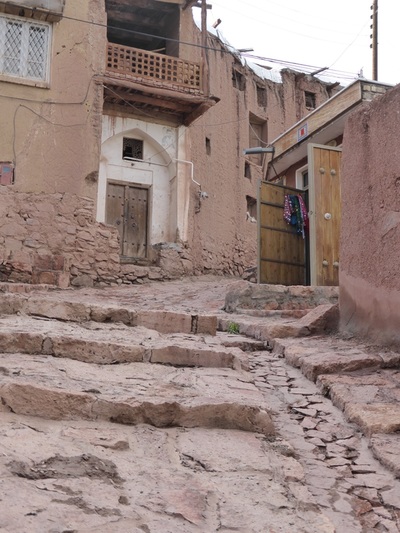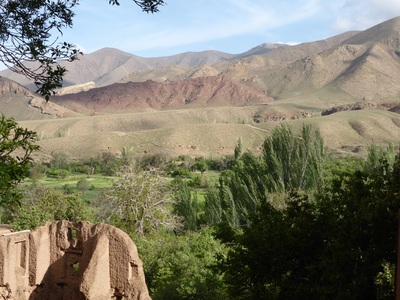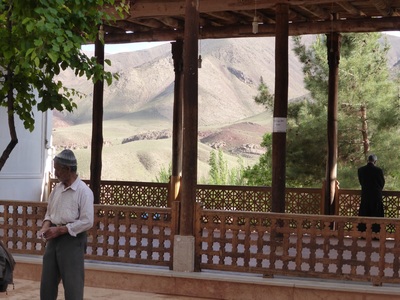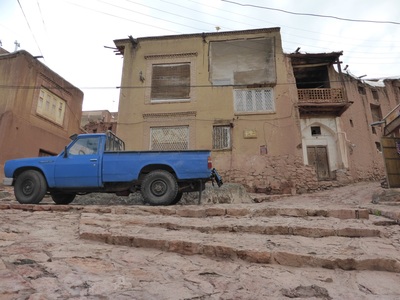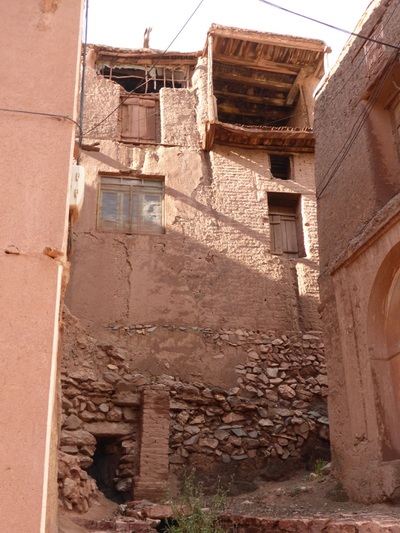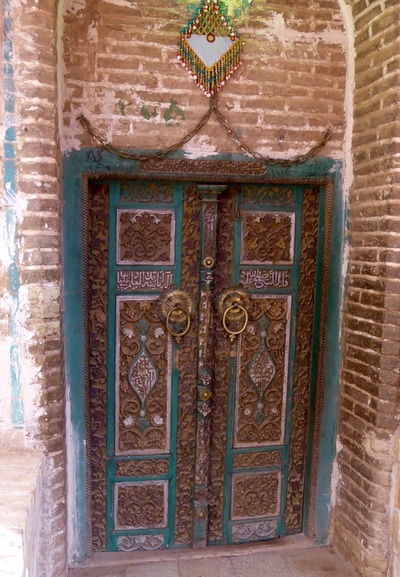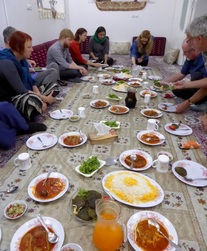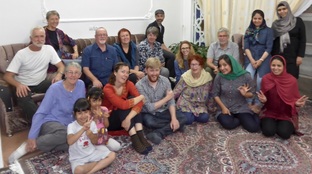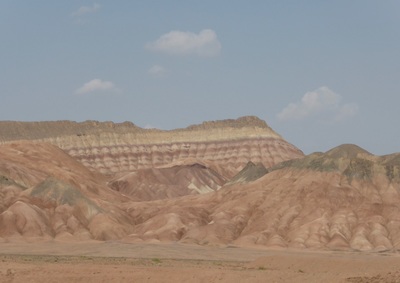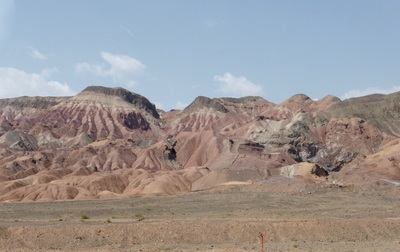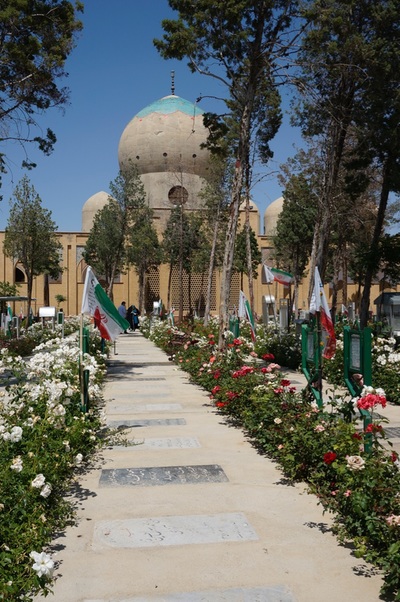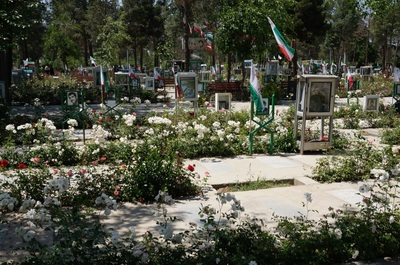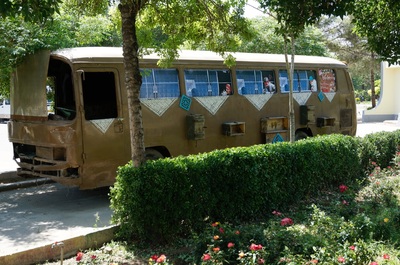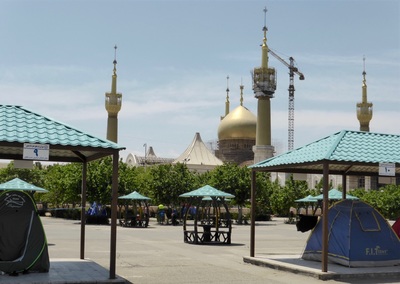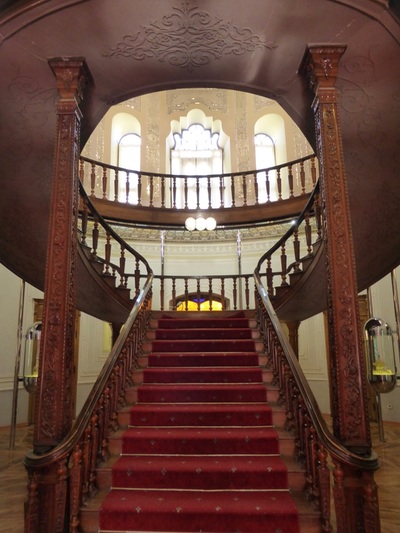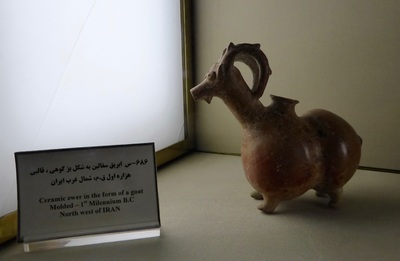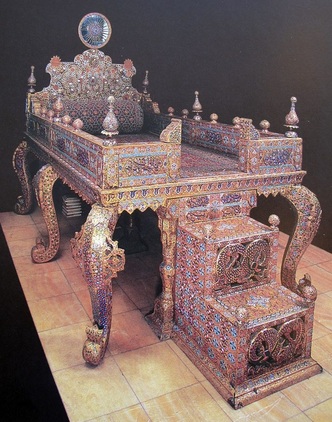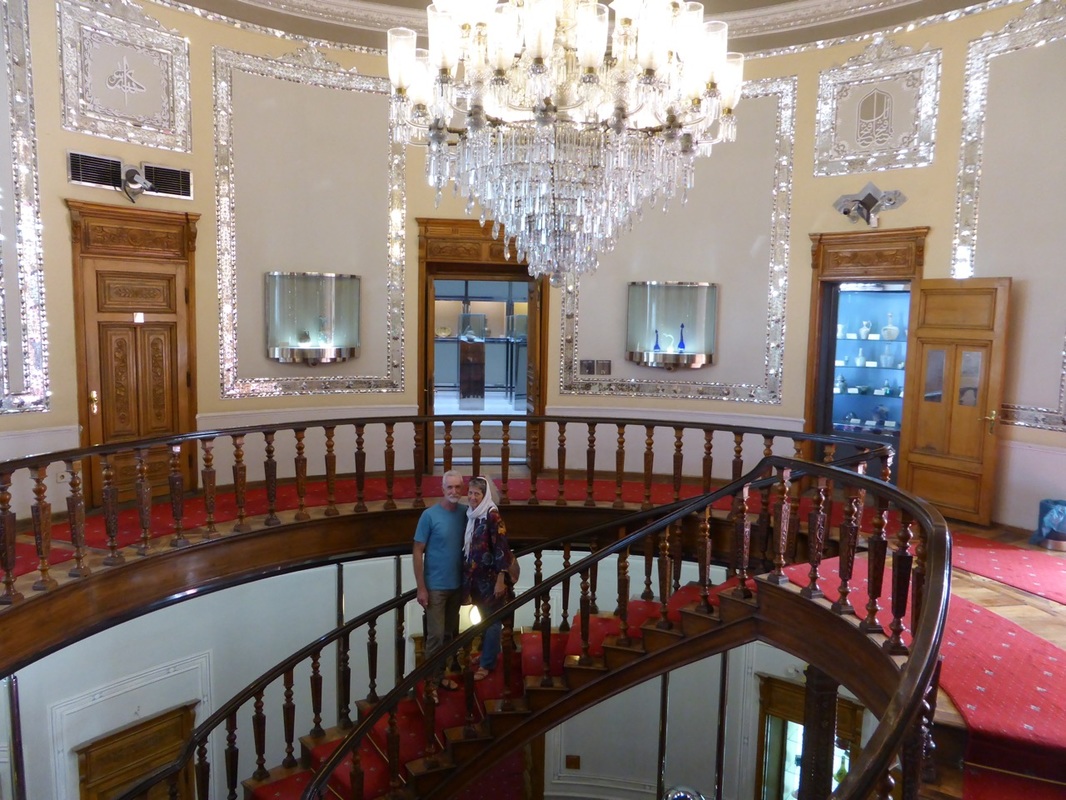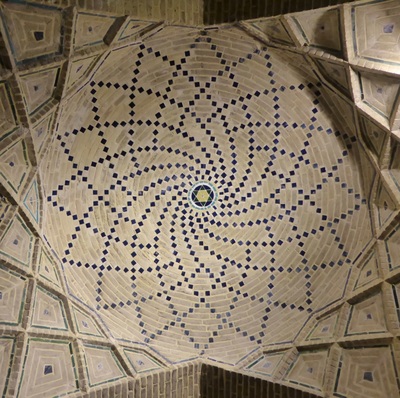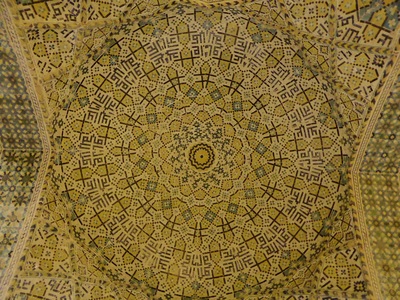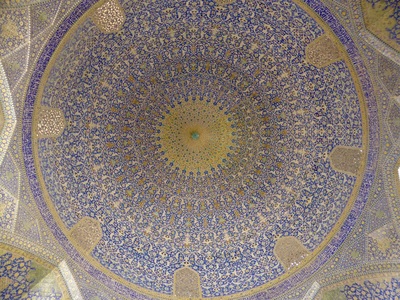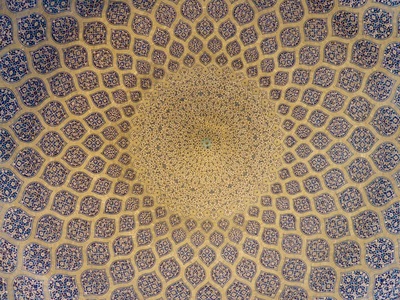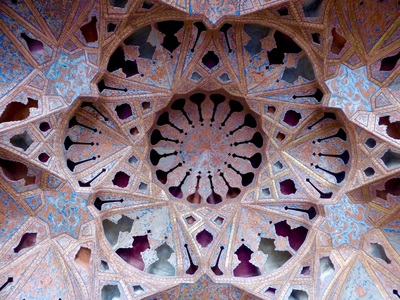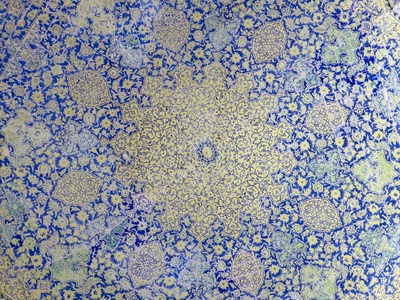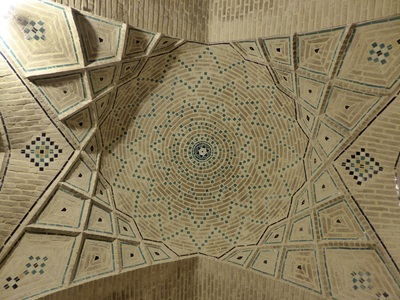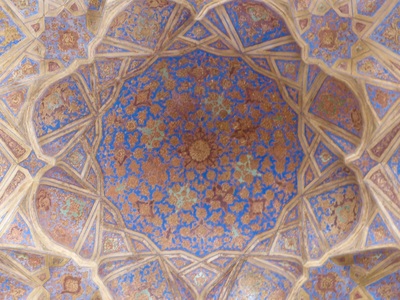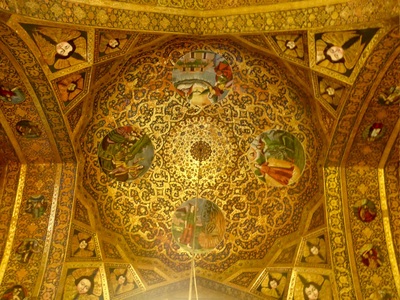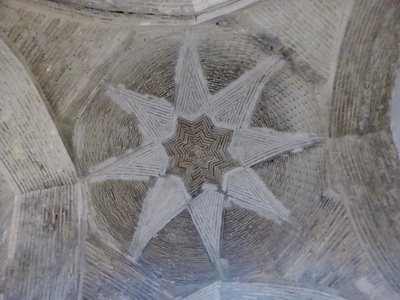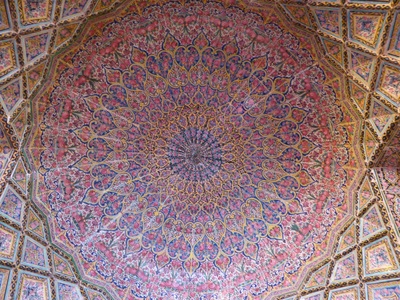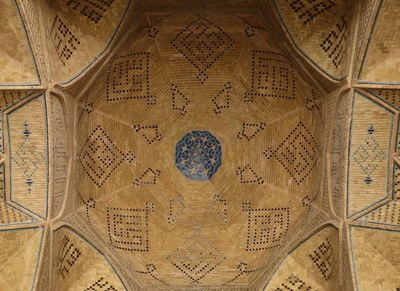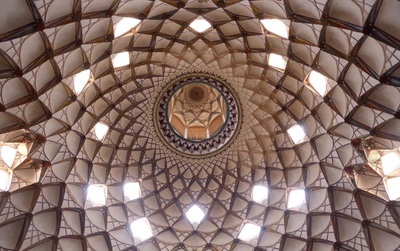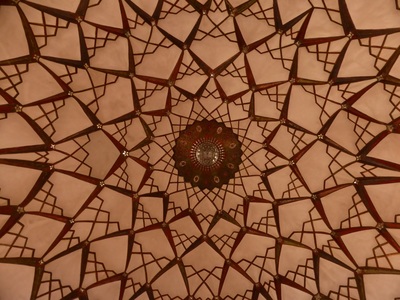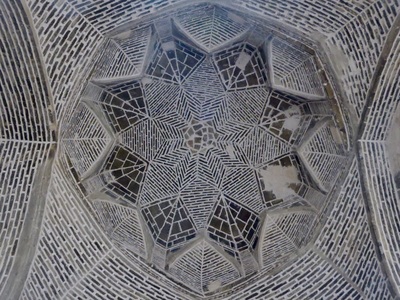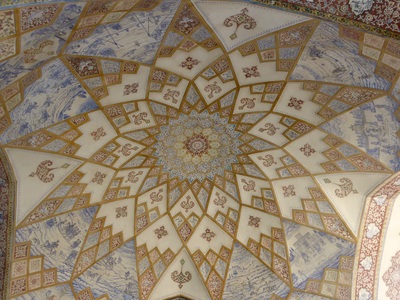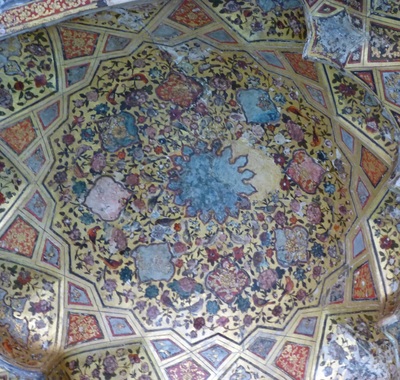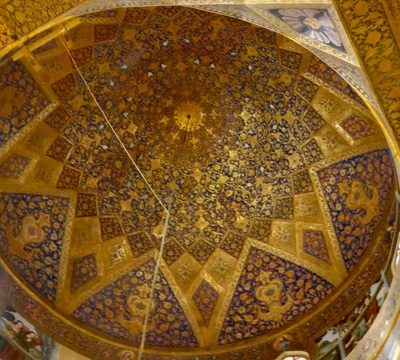Iran
28, 29 April 2016
Evening departure from Brisbane, early morning arrival in Dubai where I put on a long sleeved, long top over my long pants. Flew over deserts and rugged snow capped mountains on the way to Tehran. After landing I fumbled on a scarf on to cover most of my hair and neck. The start of hijab hair. It was Friday, prayer day for this Islamic country so the roads were pretty quiet on our way to the hotel.
Evening departure from Brisbane, early morning arrival in Dubai where I put on a long sleeved, long top over my long pants. Flew over deserts and rugged snow capped mountains on the way to Tehran. After landing I fumbled on a scarf on to cover most of my hair and neck. The start of hijab hair. It was Friday, prayer day for this Islamic country so the roads were pretty quiet on our way to the hotel.
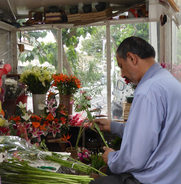 Florist at work in a streetside booth.
Florist at work in a streetside booth.
30 April
We had the morning to explore prior to the group meeting at midday.
To the money changers first to change some euros as the ATMs do not dispense money on foreign cards. While wandering around we had our first encounter of the friendliness of the people: 30 college girls in black chadors walked past smiling and waving when I was in a bakery.
We visited the Malek National Library and Museum.
At midday, we met the eclectic group of fellow travellers, a mix of ages but all well travelled in many different ways following varied interests. The next 2 weeks with our experienced guide were very interesting.
Our first excursion was on the underground to Golestan Palace, the grand bazaar and Imam Khomeini mosque (no photos). And for the evening, the first of many kebab meals.
We had the morning to explore prior to the group meeting at midday.
To the money changers first to change some euros as the ATMs do not dispense money on foreign cards. While wandering around we had our first encounter of the friendliness of the people: 30 college girls in black chadors walked past smiling and waving when I was in a bakery.
We visited the Malek National Library and Museum.
At midday, we met the eclectic group of fellow travellers, a mix of ages but all well travelled in many different ways following varied interests. The next 2 weeks with our experienced guide were very interesting.
Our first excursion was on the underground to Golestan Palace, the grand bazaar and Imam Khomeini mosque (no photos). And for the evening, the first of many kebab meals.
|
1 May Shiraz We had a morning flight to Shiraz, then sightseeing to the nearby Shah Cheragh complex. Before entering we had our first experience of wearing a chador (persian for sheet). Once donned, we had to go through a quick security check to ensure we had no weapons, scissors, video cameras, make up etc. Normal cameras and phones were ok. We had a free afternoon to enjoy the sights of Shiraz. |
Some of the colour of the Vakil Bazaar in Shiraz.
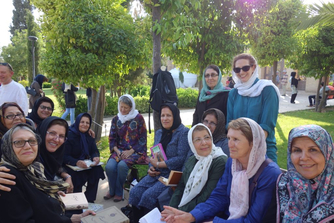 Some of the women studying Saadi.
Some of the women studying Saadi.
When we visited Hafez's tomb we were delighted to come across a group of women studying Saadi. One lady happily read a verse and although none of it was understood by us it was spoken gently but with passion. A real treat.
Hafez and Saadi were celebrated Persian poets from Shiraz during the Medieval period whose works are still loved today.
The next surprise was being invited to watch an athletics meet. We were led inside the stadium by an athlete who wasn't running because of injury. We had actually come across one of the teams at the airport in Tehran. A pole vault was being checked in. It was interesting to watch and I noticed that the female audience consisted of a small huddle of women at one end of the stadium and one other group supporting a world class female discus thrower at the other end.
We spent time in the Masjed-e Nasir-al-Molk or pink mosque with its stained glass panels and fine muqarnas (honeycomb looking ceilings), the nearby Madraseh-ye Khan where we saw black turbaned Shiah clerics happy to be photographed and the Arg-e Karim Khan (fortess built in 1766). One corner of the circular towers was lopsided due to slippage caused by an underground water system.
2 May
Today was the day to visit Naqsh-e-rostam and Persepolis. Naqsh-e-rostam is a necropolis dating back to 1000BC. The tombs of Achaemenid kings including Darius I (550-486BC), Darius II, Artaxerxes I and Xerxes I are here with some interesting base reliefs. The tombs were looted following the conquest of the Achaemenid Empire by Alexander the Great.
Today was the day to visit Naqsh-e-rostam and Persepolis. Naqsh-e-rostam is a necropolis dating back to 1000BC. The tombs of Achaemenid kings including Darius I (550-486BC), Darius II, Artaxerxes I and Xerxes I are here with some interesting base reliefs. The tombs were looted following the conquest of the Achaemenid Empire by Alexander the Great.
Persepolis was huge, interesting and hot. It comes from the greek word for Persian city.
It was founded by Darius the Great around 518 B.C., although more than a century passed before it was finally completed. It was the empire capital and palace complex for the Achaemenian kings and a center for receptions and ceremonial festivities. The splendor of Persepolis was short-lived as the palaces were looted and burned by Alexander the Great in 331-330 B.C. The ruins were not excavated until 1931.
It was founded by Darius the Great around 518 B.C., although more than a century passed before it was finally completed. It was the empire capital and palace complex for the Achaemenian kings and a center for receptions and ceremonial festivities. The splendor of Persepolis was short-lived as the palaces were looted and burned by Alexander the Great in 331-330 B.C. The ruins were not excavated until 1931.
3 May
After a morning in Shiraz we travelled north, stopping to visit some camped qashqai nomads on the way to our village stay. The nomads wander between the Persian Gulf and north of Shiraz depending on the season.
After a morning in Shiraz we travelled north, stopping to visit some camped qashqai nomads on the way to our village stay. The nomads wander between the Persian Gulf and north of Shiraz depending on the season.
In the village we were housed with a family who had been nomads a generation ago. They had chosen to settle for education and health reasons. We enjoyed a meal and dancing there and many of our questions were answered by the son whose english was very good.
We spent a comfortable night sleeping on matresses on the floor in the 50cm thick walled mud brick home.
We spent a comfortable night sleeping on matresses on the floor in the 50cm thick walled mud brick home.
4 May
Drove out of the hills and on to the productive irrigated flood plains towards Eghlid.
Drove out of the hills and on to the productive irrigated flood plains towards Eghlid.
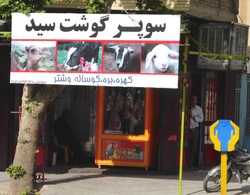 No doubt what kind of meat is sold here.
No doubt what kind of meat is sold here.
Eghlid which was very dry with snowcapped mountains in the distance was our next overnight stay.
Near the centre of town we climbed a hill which had been a Zoroastrian tower of silence where zoroastrian bodies were left to the birds of prey. Zoroastrianism was the main religion prior to the Muslim conquest of Persia in 651. We also visited the local mosque which is a shrine to those lost in the Iran-Iraq war and a common meeting place, especially for women.
We met one young woman who was practising her well phrased english. Meanwhile outside Guy was being asked about Texas by a group of young men.
Near the centre of town we climbed a hill which had been a Zoroastrian tower of silence where zoroastrian bodies were left to the birds of prey. Zoroastrianism was the main religion prior to the Muslim conquest of Persia in 651. We also visited the local mosque which is a shrine to those lost in the Iran-Iraq war and a common meeting place, especially for women.
We met one young woman who was practising her well phrased english. Meanwhile outside Guy was being asked about Texas by a group of young men.
|
Also in Abarkuh is a 4,000 year old cypress, the oldest in Asia. And just out of town we saw a restored 5th century stone tomb giving us good views over the desert town. |
Off to the Zein-o-din caravanserai which was built in the 16th century for those merchants travelling on the silk road. Interesting night stay but it was very close to the major road leading south to Afghanistan and Pakistan. Lots of trucks.
6, 7 May Yazd
Staying in the desert we went up the road to Yazd, the heart of the Zoroastrian religion. Visited the towers of silence just outside Yazd and then the Fire Temple. The fire inside is said to have been burning continuously since 470AD.
Staying in the desert we went up the road to Yazd, the heart of the Zoroastrian religion. Visited the towers of silence just outside Yazd and then the Fire Temple. The fire inside is said to have been burning continuously since 470AD.
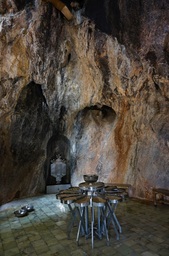 The wall where the drip, drip (chak chak) comes down the rock.
The wall where the drip, drip (chak chak) comes down the rock.
The Zoroastrianism faravahar - the face is like a person therefore showing the connection to mankind; each layer of feathers in the wings represents good reflections, good words and good deeds; the layers in the tail mean the opposite, bad reflections, bad words and bad deeds; the forward facing 'tail' means we must look for the good in life and the back 'tail' means we must turn away from the bad; the circle around the waist represents our endless spirit; the ring in the hand represents loyalty and the other hand points upwards meaning we must reach for higher ideals.
We also visited Chak Chak, the most sacred of the mountain shrines of Zoroastrianism. It is where Nikbanou, daughter of the last pre-Islamic Persian ruler, was cornered by the invading Arab army in 640 AD. Fearing capture Nikbanou prayed to Ahura Mazda to protect her from her enemies. In response to Nikbanou's pleadings, the mountain miraculously opened up and sheltered her from the invaders.Chak Chak features an ever-dripping spring located at the mountain. Growing beside the holy spring is an immense and ancient tree said to be Nikbanou's cane.
We also visited Chak Chak, the most sacred of the mountain shrines of Zoroastrianism. It is where Nikbanou, daughter of the last pre-Islamic Persian ruler, was cornered by the invading Arab army in 640 AD. Fearing capture Nikbanou prayed to Ahura Mazda to protect her from her enemies. In response to Nikbanou's pleadings, the mountain miraculously opened up and sheltered her from the invaders.Chak Chak features an ever-dripping spring located at the mountain. Growing beside the holy spring is an immense and ancient tree said to be Nikbanou's cane.
North of Yazd is Kharanaq, a deserted crumbling adobe town that dates back around 1,000 years although the area has been inhabited for over 4000 years. As well as the labyrinth of tunnels, passageways and rooms there is a shaking minaret, and an old caravanserai that has been restored.
8 - 10 May Esfahan
A hair raising taxi ride darting and weaving through the streets of Yazd to the intercity bus terminal, then a fiive hour comfortable coach ride to Esfahan where we met our new minibus driver.
We had an evening walk to Naqsh-e-Jahan Square, the largest square after Tiananmen Square although much more beautiful before enjoying dinner at the Abbasi Hotel.
A hair raising taxi ride darting and weaving through the streets of Yazd to the intercity bus terminal, then a fiive hour comfortable coach ride to Esfahan where we met our new minibus driver.
We had an evening walk to Naqsh-e-Jahan Square, the largest square after Tiananmen Square although much more beautiful before enjoying dinner at the Abbasi Hotel.
Esfahan has a lot to offer having been the capital of Persia at its peak in the 16th century under Shah Abbas.
We started the next morning with a walk to the Naqsh-e-Jahan Square (Imam Square) to see the dominant Imam Mosque which is one of the masterpieces of Persian architecture. Its construction began in 1611, and its splendor is mainly due to the beauty of its seven-colour mosaic tiles and calligraphic inscriptions. Also facing onto the Square is the Sheikh Lotfollah Mosque which was built for women of the shah’s harem. Like the Imam Mosque it is offset from the square so as to face Mecca. Opposite Sheikh Lotfollah Mosque is the third major building facing onto the Square, the Ali Qapu Palace. Originally designed as a vast portal there are seven floors, each accessible by a spiral staircase. In the sixth floor, Music Hall, deep circular niches are found in the walls, having not only aesthetic value, but also acoustic.
We started the next morning with a walk to the Naqsh-e-Jahan Square (Imam Square) to see the dominant Imam Mosque which is one of the masterpieces of Persian architecture. Its construction began in 1611, and its splendor is mainly due to the beauty of its seven-colour mosaic tiles and calligraphic inscriptions. Also facing onto the Square is the Sheikh Lotfollah Mosque which was built for women of the shah’s harem. Like the Imam Mosque it is offset from the square so as to face Mecca. Opposite Sheikh Lotfollah Mosque is the third major building facing onto the Square, the Ali Qapu Palace. Originally designed as a vast portal there are seven floors, each accessible by a spiral staircase. In the sixth floor, Music Hall, deep circular niches are found in the walls, having not only aesthetic value, but also acoustic.
In the evening we went across the Zayandeh River on the Si-o-Seh Bridge, the bridge of 33 arches, to get over to the Armenian quarter in Jolfa.
Shah Abbas brought a colony of Christians from Jolfa, now on Irans northern border to Esfahan as he sought the skills of them as merchants, entrepreneurs and artists. He ensured their religious freedom was respected. The Armenian Vank Cathedral is now the focal point of the Armenian Church in Iran. It was quite a contrast after seeing so many mosques.
We also crossed the Chubi and Khaju Bridges, which are well used pedestrian bridges allowing access to the beautiful gardens running along either side of the river for several kilometres.
Shah Abbas brought a colony of Christians from Jolfa, now on Irans northern border to Esfahan as he sought the skills of them as merchants, entrepreneurs and artists. He ensured their religious freedom was respected. The Armenian Vank Cathedral is now the focal point of the Armenian Church in Iran. It was quite a contrast after seeing so many mosques.
We also crossed the Chubi and Khaju Bridges, which are well used pedestrian bridges allowing access to the beautiful gardens running along either side of the river for several kilometres.
11 May
On our last day in Esfahan we caught a taxi to the Jameh Mosque with two large domes dating back to the 11th century. Although huge and interesting we were starting to be a little mosqued out. Lastly, it was the Chehel Sotun Palace, a pavilion in the middle of a classic Persian Garden at the far end of a long pool. It is the only surviving palace on the royal precinct stretching from Al Qapu on Naqsh-e-Jehan Square.
On our last day in Esfahan we caught a taxi to the Jameh Mosque with two large domes dating back to the 11th century. Although huge and interesting we were starting to be a little mosqued out. Lastly, it was the Chehel Sotun Palace, a pavilion in the middle of a classic Persian Garden at the far end of a long pool. It is the only surviving palace on the royal precinct stretching from Al Qapu on Naqsh-e-Jehan Square.
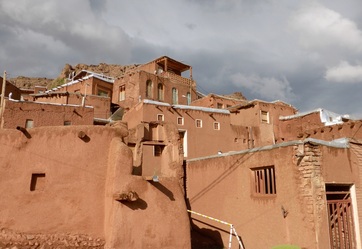 Abyaneh
Abyaneh
We drove north to Abyaneh which is an ancient village at 8000 feet at the base of Mt Karkus. It is hewn out of the red rock and many of the aging population still wear their traditional clothing of a floral patterned white shawl worn as a headscarf over a black dress, gathered at the waist, an apron and black stockings for women and black baggy pants for men. There has been a recent finding of a 2500 year old Zoroastrian fire temple located in the basement of what is a current house.
12 May
Continuing a little further north to Kashan. On arrival we visited the Agha Bozorg Mosque and Madraseh. The mosque had been decommissioned but the madrasah was still in use. So we were not to go down there. An Iranian college group and other tourists were there also….more photos!
Kashan, an old merchant town, also has some very fine merchant homes from the 19th century. We visited the Khan-e Borujerdi and Khan-e Tabataee. Both huge complexes featuring courtyards, gardens with cooling pools for family, servants and visitors.
Continuing a little further north to Kashan. On arrival we visited the Agha Bozorg Mosque and Madraseh. The mosque had been decommissioned but the madrasah was still in use. So we were not to go down there. An Iranian college group and other tourists were there also….more photos!
Kashan, an old merchant town, also has some very fine merchant homes from the 19th century. We visited the Khan-e Borujerdi and Khan-e Tabataee. Both huge complexes featuring courtyards, gardens with cooling pools for family, servants and visitors.
We visited the UNESCO listed Persian Gardens at Bagh-e Fin (Fin Gardens) on the outskirts of Kashan in the late afternoon. A very popular place on a Friday!
13 May Tehran
Tehran bound with stops at the Imam Khomeini shrine and Behesht-e Zahra, an enormous cemetery with over 200,000 graves including those who lost their lives in the Iran-Iraq war.
Farewell vegetarian meal with the group at the Museum of Contemporary Art restaurant.
Tehran bound with stops at the Imam Khomeini shrine and Behesht-e Zahra, an enormous cemetery with over 200,000 graves including those who lost their lives in the Iran-Iraq war.
Farewell vegetarian meal with the group at the Museum of Contemporary Art restaurant.
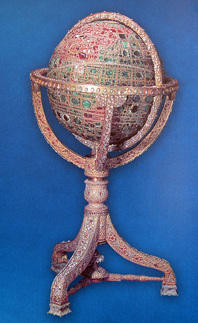 Bejeweled.
Bejeweled.
14 May
Last day to relax and enjoy. We visited the National Jewels Museum which is housed in the vault of the Central Bank. No cameras or phones are allowed inside. So no photos by us. But there were so many huge precious stones clusrered on everything from tiaras to thrones to globes, it was hard to believe it wasn't all fake. The Darya-ye Nur, believed to be the worlds largest uncut pink diamond was there, along with the 34kg globe of jewels encrusted with rubies, emeralds and diamonds, 51,366 precious stones to be exact.
Globe of Jewels. Seas are depicted by emeralds while Iran, Britain and France are depicted in diamonds and the rest of the countries are in rubies.
The Glass and Ceramics Museum is housed in a beautiful building, a little more subtle than the jewels. The displays and even the display cases were presented in an interesting yet modern way which suited the surrounds.
15 May
Early morning departure from Tehran back to Dubai and then Munich.
Early morning departure from Tehran back to Dubai and then Munich.
Domes of Iran

